Marketing today is a bit like navigating a labyrinth. High customer expectations, shrinking budgets, and the demand for return on investment (ROI) mean teams must pivot and innovate to consistently keep up with trends. But partnerships allow you to meet modern-day challenges and continually improve customer experience—despite what’s happening around you.
Partnership marketing encompasses any partners who refer and recommend you to customers. These could be creators who recommend your brand, publishing houses like Meredith and Conde Nast that review your business, affiliates who link to your products, and more.
Explore your definitive guide to maximizing the influential potential of partnerships and the winning strategy for implementing the right program for your business.
- Partnerships 101: the winning strategy for modern brands
- Harness partnership benefits for business growth
- 6 popular partner types: Affiliates, influencers, publishers, and more
- Make award-winning moves with the right partnership management strategy
- The perfect management solution: In-house, affiliate networks, or SaaS platforms
Partnerships 101: the winning strategy for modern brands
Partnership marketing is a collaborative relationship with other brands or individuals that mutually benefits both partners and helps them achieve their objectives. These partnerships are a creative, transparent, and relational way to reach new communities of potential customers. With it, your brand can strategically realize several benefits, including:
- Increased revenue without increasing team size or budget
- Increased brand awareness to reach new audiences, regions, or market segments
- Improved customer retention and build strong brand advocates
- Gain higher market share by diversifying partner types
- Increased conversion rates by leveraging authentic relationships
The partnership economy has rapidly evolved beyond traditional affiliates to include new partner types—ambassadors, social media influencers, content publishers, and customer advocates, to name a few—with unlimited growth opportunities.
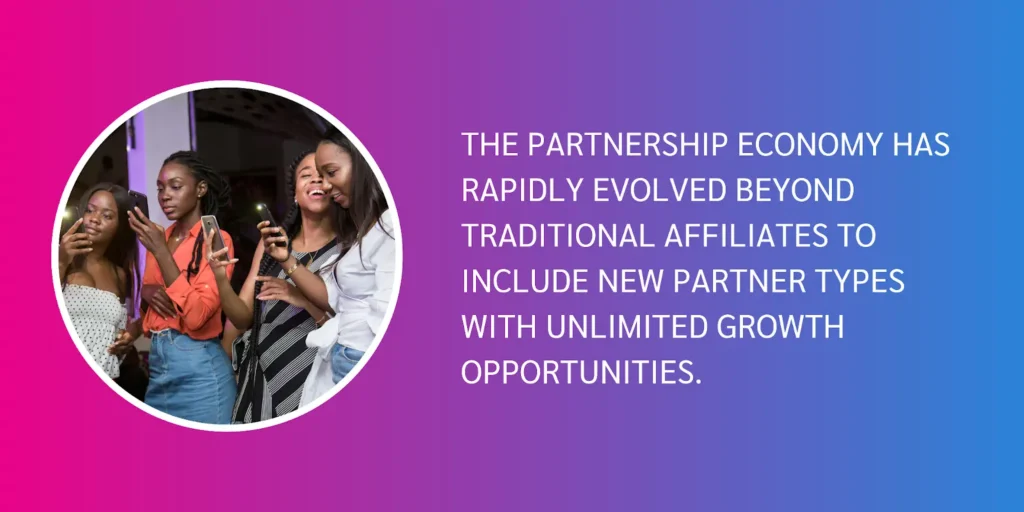
These collaborations encompass the full spectrum of business relationships and alliances. While ‘partnership marketing’ is commonly used, shortening this to ‘partnerships’ is a better term for how marketers leverage these relationships because:
- Partnerships represent an independent third revenue driver that can stand alongside traditional marketing and sales.
- People with marketing backgrounds can manage partnerships but also require input from sales teams, business development experts, enablement experts, and partner services and support.
3 ways partnership benefit business growth
Brands like Sephora, HubSpot, and Decathlon built bespoke partnership programs aligned with their brand values, marketing strategies, and customer needs.
Amazon Music and Resident Home are building omnichannel strategies from their affiliate and influencer partnerships and collaborating with other marketing stakeholders to provide assets, data, and insights—proving that partnerships enhance what’s possible (and don’t rob other channels of their efforts).
Here’s why they found partnerships reliable for their businesses:
1. Offer low-cost and high rewards
In today’s business landscape, capturing consumer attention and loyalty comes with a significant price tag. Recent studies show customer acquisition costs have increased by 222 percent in the last eight years. As the costs of digital advertising continue to rise, the effectiveness of these ads is diminishing.
But unlike traditional or digital advertising, partnerships offer a cost-effective way to reach more customers, increase return on spend, and remain efficient as your brand expands. Instead of spending indiscriminately on traditional advertising with uncertain returns, partnerships work on a performance-based model. This approach aligns cost directly with results, ensuring every penny spent invests in tangible outcomes—increased sales, downloads, leads, clicks, or views.
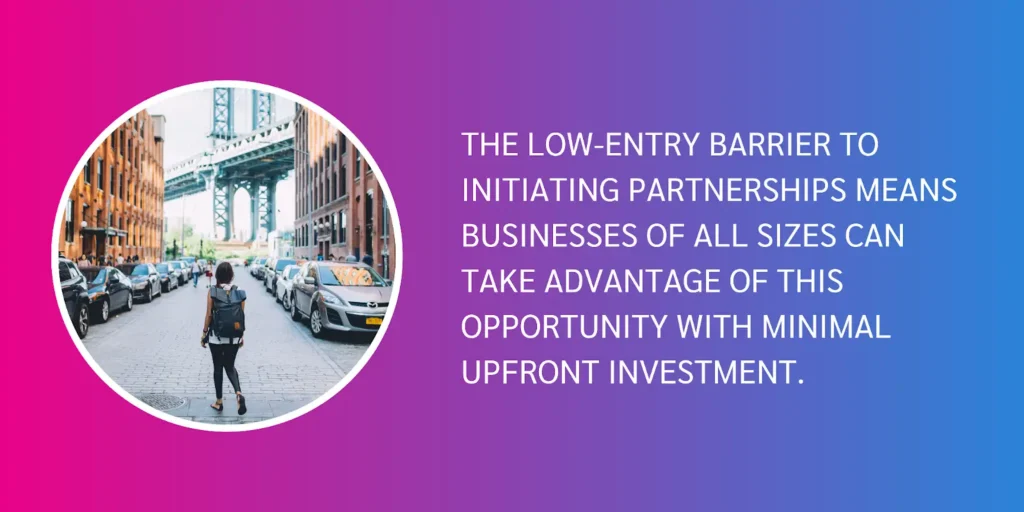
Partnerships are a more significant growth driver for some organizations than paid search. The Performance Marketing Association found that the return on ad spend (ROAS) for affiliate marketing was 12:1 in 2022, a strong return compared to other digital marketing channels.
2. Establish trust with customers
After years of being hammered with thousands of ad messages daily, 69% of audiences distrust traditional advertising. Consumers today prefer to make decisions based on research and recommendations from trusted sources.
Micro Biz Mag reported that UK consumers are more than twice as likely to trust product recommendations from people they follow on social media than a company’s website. Additionally, Adweek revealed that almost half of U.S. consumers purchase based on creator recommendations.
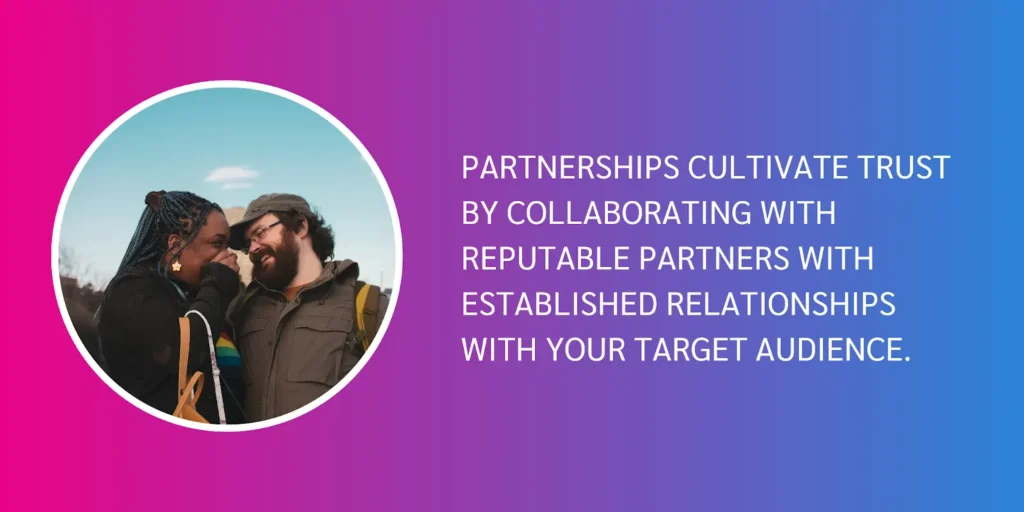
Brands can leverage this trust to their advantage. This third-party endorsement is a powerful social proof, reassuring customers of your brand’s credibility and worthiness.
3. Connect with customers throughout the customer journey
Modern shoppers [81 percent] rely on research from multiple trusted online sources before purchasing. Each interaction— reading product reviews through favorite publications, watching short-form videos on TikTok, or grabbing a coupon from a deal site before checking out—creates a unique touchpoint along the buyer journey.
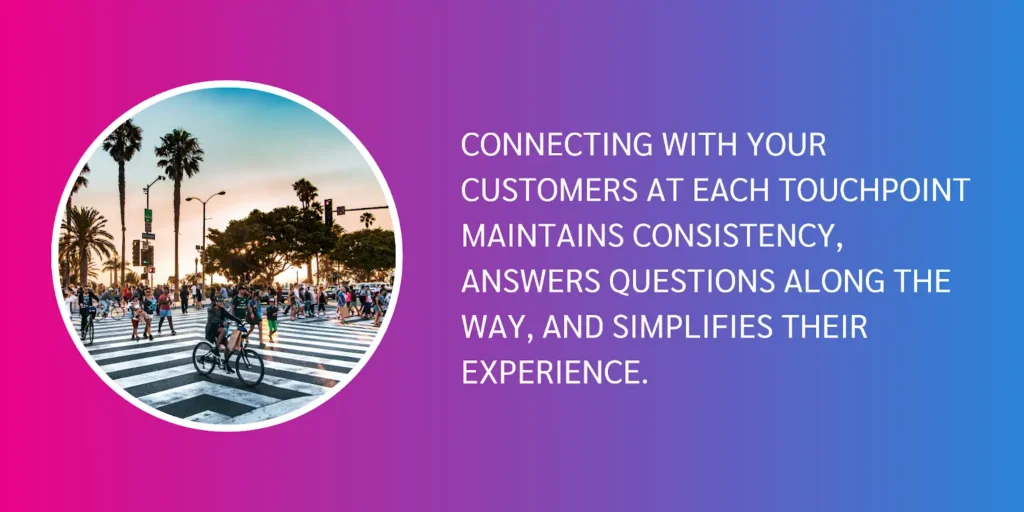
For example, if a customer is in the research phase and reading product reviews, influencer partners can offer product demos and provide detailed video reviews of your product in use. They can then find further validation on third-party review sites or in an editorial in their favorite publication.
By strategically working with partners at different stages, you can stay top-of-mind as a customer moves toward conversion.
Ready to start your partnership program?
Talk with our team of partnership experts
6 popular partner types: Affiliates, influencers, publishers, and more
A diverse partner mix reaches audiences at every funnel stage, nudging them to purchase at every step. Some partners are better at building awareness and cultivating consideration, while others drive conversion or retain loyal customers.
Here’s a quick look at different partner types:
1. Traditional affiliates
In the simplest terms, a traditional affiliate is a person or organization that promotes a company’s products or services. They drive traffic to your brand through various channels like websites, blogs, social media, email lists, and more.
Your brand provides a unique affiliate link for them to share with a specific conversion goal in mind—such as purchasing a product, filling out a lead form, or downloading an app. The affiliate earns a commission when someone clicks on that link and converts.
The IG Group, a leading trading and investing provider, used a robust program of traditional affiliates to reach the top ranking in a Forex Broker Table with a long-term comparison table partner, leading to an outstanding 381% increase in actions.
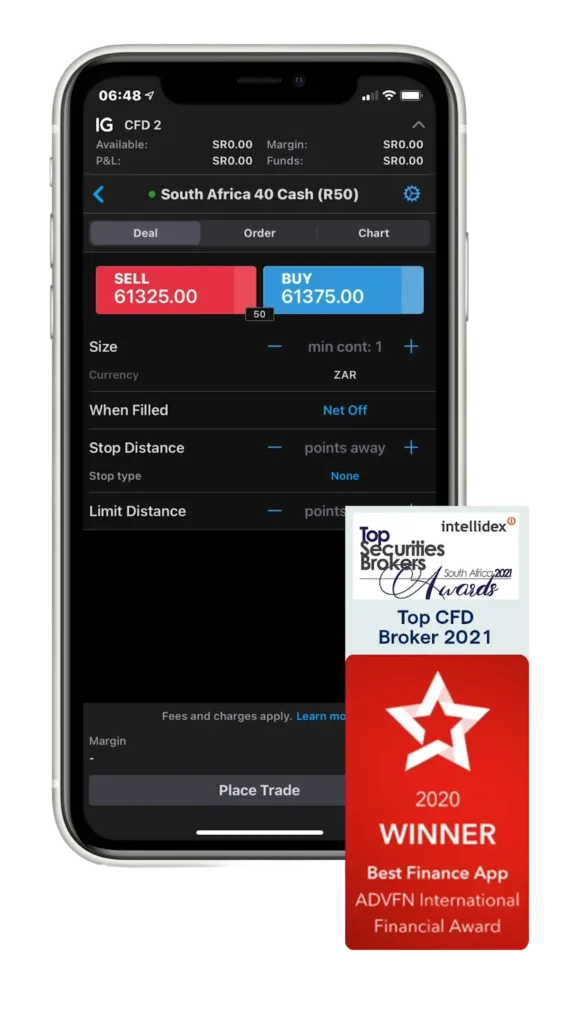
Strategic fit:
- Awareness
- Consideration
- Decision
- Retention
2. Influencers and content creators
An influencer or content creator is more than just a person with an impressive following. They’re a powerful conduit in the marketing funnel—turning tuned-in fans into engaged customers. These content creators use their social media platforms—including TikTok, Instagram, and YouTube—to achieve the following:
- Amplify brand visibility at the top of the funnel
- Infuse credibility into the consideration phase
- Influence the decision-making process
They humanize your products and embody your brand values, creating a relatable narrative that resonates with your target audience. BBQGuys built a campaign with influencers to share what made them #BornToGrill. The goal was to attract new audiences outside its standard backyard grilling dads.

[Image source: @chelseyexplores]
Influencer partnerships are gaining popularity as businesses look to connect with Gen Z shoppers. Younger consumers seek product advice from their peers and opinion leaders rather than advertising.
Strategic fit:
- Awareness
- Consideration
- Decision
- Retention
3. Content partners (aka commerce content)
Commerce content is a potent blend of content marketing and ecommerce. It’s all about creating engaging, relevant, and valuable content that captures your audience’s attention and drives product sales. Think blog posts, articles, video content, social media posts, and shopping guides that provide honest feedback about products or services with the opportunity to purchase through affiliate links.
It’s effective because today’s customers crave authentic interactions. They want to be educated, entertained, and informed— commerce content offers value, builds trust, and gently nudges readers towards purchasing. It does this by weaving a compelling brand narrative that resonates with your customers on a deeper level.
Brands can address critical issues in the buyer’s journey through content partners in the following ways:
- Increases your brand exposure by placing your brand in front of a new, engaged audience.
- Improves credibility as your partner’s endorsement acts as a powerful testimonial.
- Contributes to a significant boost in your sales pipeline, increasing revenue and business growth.
Cozy Earth created a content powerhouse through partnerships with publishers. The bedding and sleepwear brand even features a towel bundle among Oprah’s Favorite Things. Content partnerships brought in 55 percent of the brand’s revenue thanks to a 92 percent increase in online store traffic. Overall, commerce content provided a 912:1 return on investment for the brand.

[Image source: Cozy Earth]
“We really do see a lot of value in approaching customers through media publishers, and find it works well for our top-of-funnel approach.”
Owen Turner, Affiliate and PR Manager, Cozy Earth
Strategic fit:
- Awareness
- Consideration
- Decision
- Retention
4. Customer referral or advocate
A customer referral program leverages your existing, satisfied customers to attract new ones. It’s simple: your customers refer their friends, family, or colleagues to your brand, and in return, they get rewards. These could be cash rewards, discounts, or exclusive perks—for both the customer and the person referred.
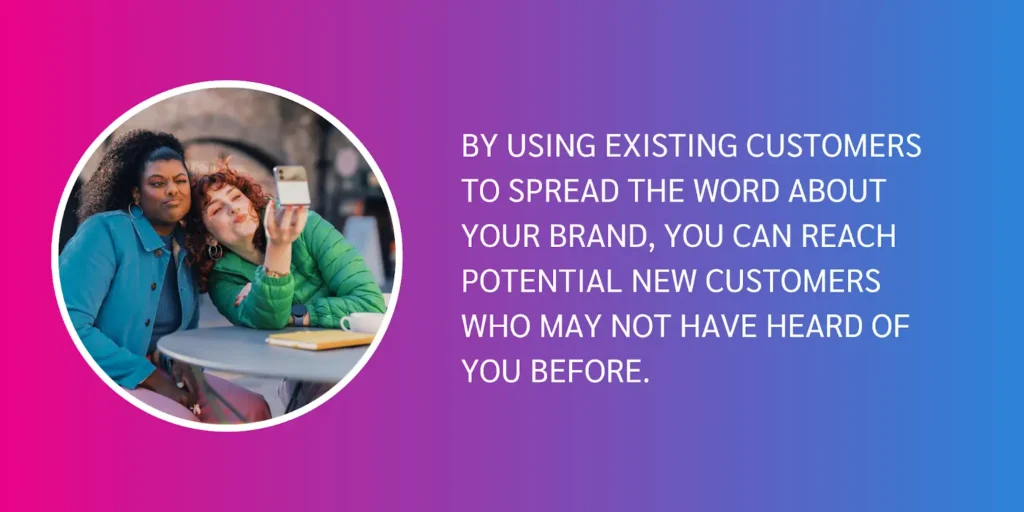
This can greatly increase your brand awareness and presence in the market. Additionally, since the referrals come from known sources (i.e. friends or family), potential customers are more likely to consider and trust your brand.
For example, Flytographer connects customers to local photographers globally, with 20 percent of bookings coming from word-of-mouth referrals. The brand partnered with SaaSquatch to launch a refer-a-friend program. The referrer received a $25 credit toward their next shoot, and the newly acquired referred customers got $25 off their first shoot.
The referral program drove over 2,500 new customers and raised over $ 1.2 million in word-of-mouth sales.
Strategic fit:
● Awareness
● Decision
● Retention
● Advocate
5. Loyalty programs
A loyalty program is a rewards system for repeat customers. However, the benefits go both ways. For customers, it’s about earning rewards and feeling valued. For your business, it’s about fostering customer loyalty, driving repeat sales, and gaining valuable insights into your customers’ behaviors and preferences.
For instance, passengers can travel, earn, redeem, and repeat with Air Canada’s Aeroplan program. The more travelers fly, the more Aeroplan points they earn, introducing them to greater benefits, including flight rewards, exclusive car rental rates, and hotel discounts.
Strategic fit:
- Consideration
- Decision
- Retention
6. Deals and coupon sites
Deals and coupon sites are partners that offer promotional codes, discounts, or special offers for your brand. Sites like RetailMeNot, Coupon Cause, and Health Service Discounts act as a bridge connecting you with potential customers looking for great deals.
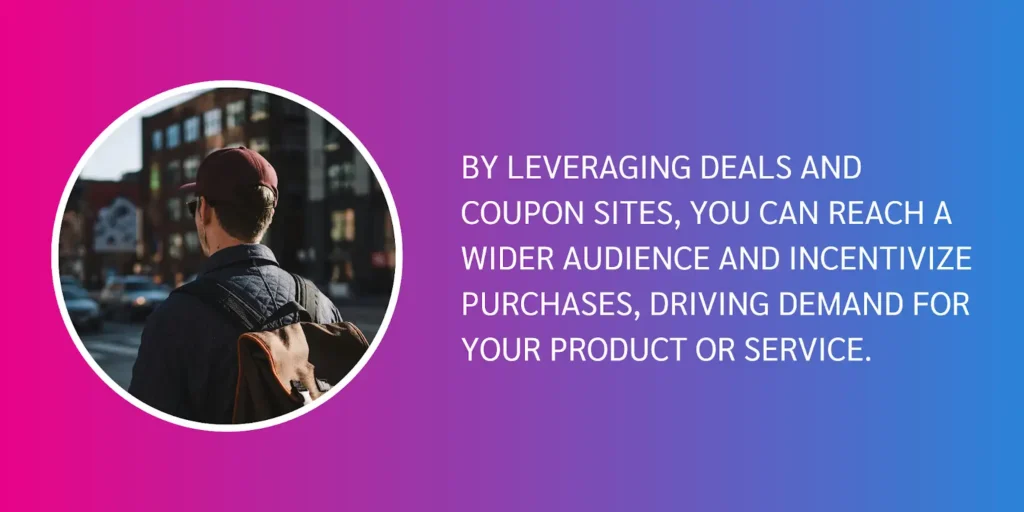
Brands can strategically position these partner types throughout the sales funnel to maximize impact.
- Welcome deals increase brand recognition and visibility
- Percentage discounts persuade potential customers to choose you over competitors
- Seasonal promo codes create urgency that drives action
- Exclusive coupons can foster loyalty with existing customers
Strategic fit:
- Awareness
- Consideration
- Decision
- Retention
Make award-winning moves with the right partnership management strategy
Brands must develop comprehensive plans to achieve a successful partnership outcome. When crafting a partnership management strategy, it is crucial to consider the following essentials. This ensures that you take advantage of a partnership win and optimize your chances for success.
The partnership life cycle is the blueprint for success
Run effective partnership management through a unified framework covering activities that forge, deepen, and optimize partner relationships. This optimized framework is known as the Partnership Life Cycle.
Consider it a journey that your brand and partners embark on together. It’s not merely a one-and-done deal but rather an evolving process. Each of the six stages presents an opportunity to strengthen your connection with partners for long-term collaborations.
The best part is that this framework applies to all partnerships, eliminating the need to approach each as a unique entity requiring customized mechanisms. Get a glimpse into the six stages of the Partnership Life Cycle.
Discover and Recruit
Discovering and recruiting the right partners is pivotal to any partnership management strategy. Leading businesses understand that a thriving partnership ecosystem begins with identifying aligned collaborators who add value and share a common vision.
Brands can use the following best practices to find the partners driving growth:
- Define your ideal partner. The perfect partner should complement your business, reach the same audience, and share similar values.
- Research potential partners. Look at your potential partner’s target audience, values, and goals. Are they aligning with yours? You want to ensure that both parties will benefit from this partnership.
- Craft an irresistible partnership program. Once you’ve found your match, it’s time to woo them with a killer partnership program. Ensure the benefits are crystal clear—increased visibility, shared resources, or access to a wider customer base. Remember, it’s all about creating a win-win situation.
- Reach out and build relationships. Be confident, genuine, and transparent. Share your vision for the partnership and highlight the mutual benefits. Don’t forget to use different communication channels—emails, phone calls, and even social media can be great for making that initial contact.
- Negotiate and build trust. Be open, listen to partners’ needs, and find a middle ground for both parties. Building trust is crucial – always deliver on promises and maintain open lines of communication.
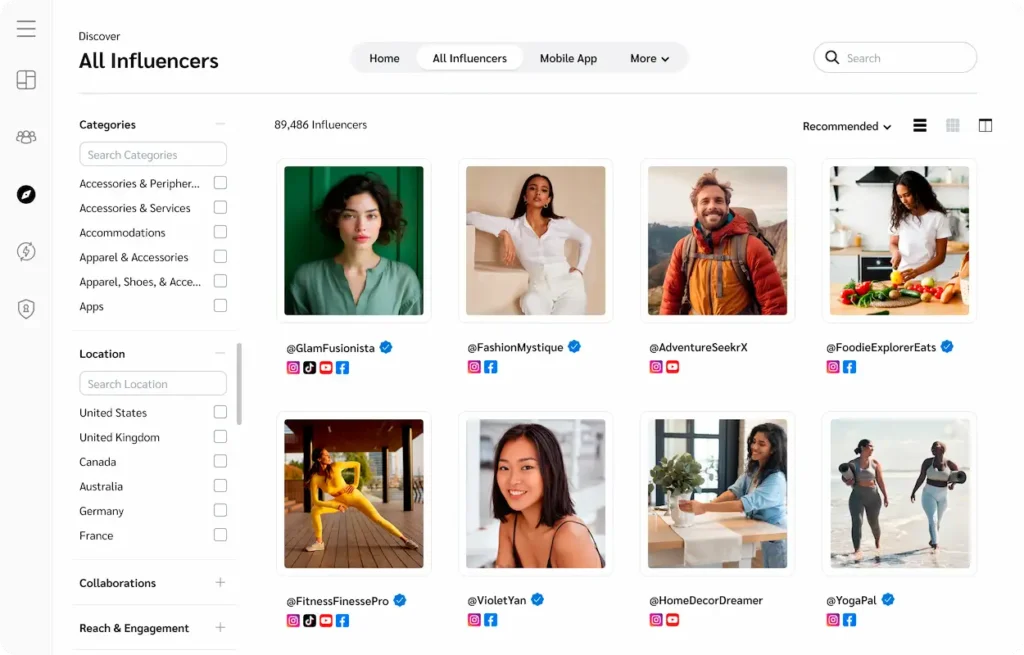
Savvy partnership managers harness tools like impact.com—with features such as Extended Search, AI Recommendations, and robust filters—to streamline the Discovery process. They tap into extensive networks filled with potential partners across various sectors.
Contract and Pay
Equipped with an agile contracting system—that can be tailored to the unique contours of each partnership—ensures clear expectations and legal integrity. This adaptability empowers partners to operate confidently fully knowledgeable of their commitments and benefits.
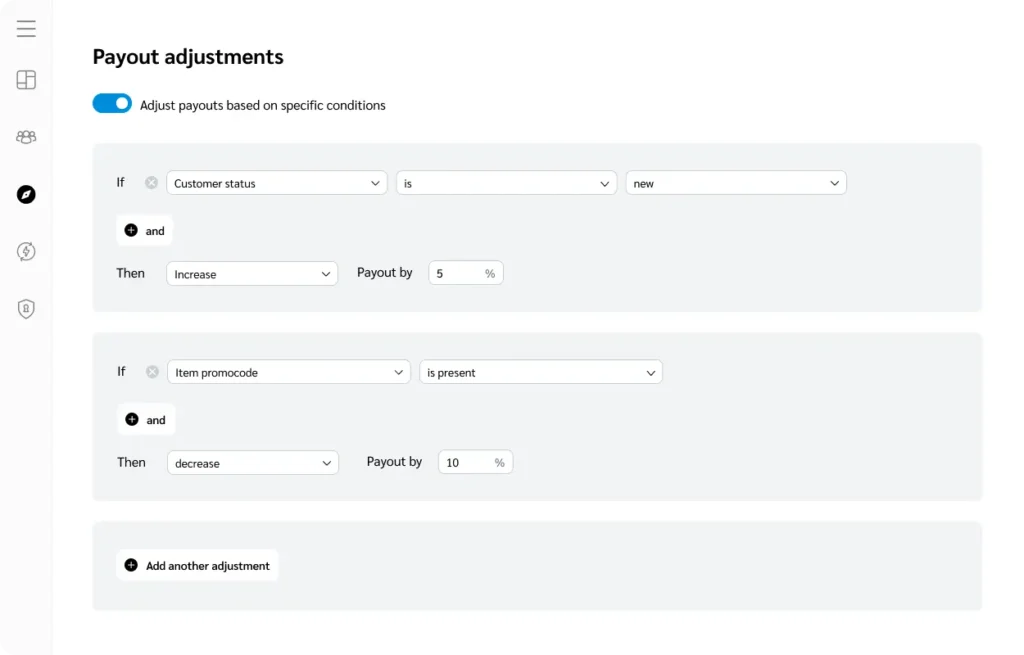
Consider these contract and payment strategies for effective partnership management that maximizes ROI.
- Define performance metrics. Decide what success looks like—maybe it’s increased traffic, higher conversion rates, or a boost in sales. Whatever your goals are, ensure they’re clear and measurable. These metrics will be your guiding light throughout the partnership journey.
- Develop an incentive-based payment model. Your payment model should incentivize partners to hit those targets you’ve set. Consider what motivates your partners—a commission-based structure, flat fees, or performance bonuses. The key is to create a win-win scenario that rewards partners for delivering results.
Track
Effective partner tracking gives brands a granular view of their partner interaction. This allows for a data-driven approach to performance appraisal and incentivization, ensuring you can measure each partner’s contributions against tangible outcomes.
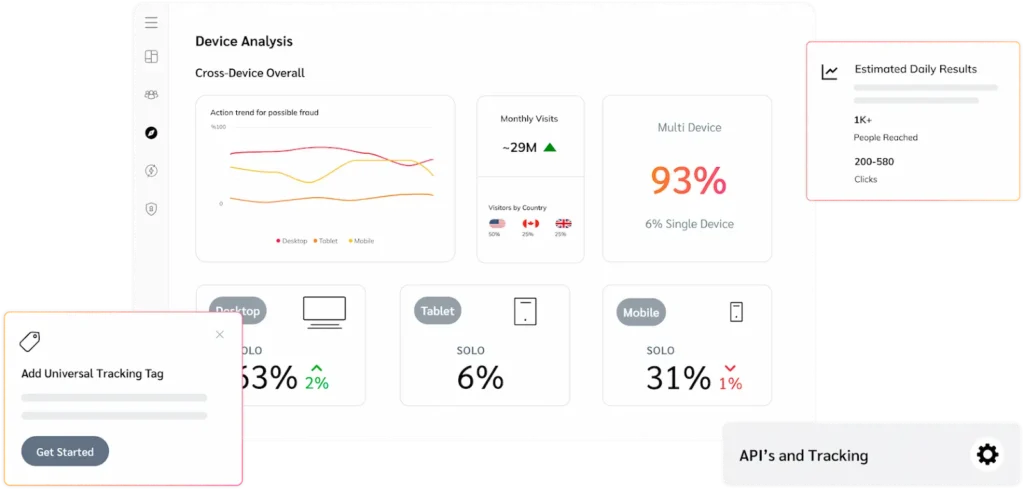
The true value of effective tracking lies in the actionable insights it yields. These insights guide strategy refinement and are pivotal in achieving a competitive edge. Take note of the following to revolutionize your partner tracking and performance measurement.
- Identifying key performance metrics. Know what success looks like for your partnership. This could be increased revenue, more clicks, higher conversions, or a boost in impressions. These metrics will be your roadmap to success.
- Tracking your metrics. Now that you’ve got your metrics, you need a way to track them. This could be as simple as a spreadsheet or as sophisticated as software such as those provided by impact.com. The key here is consistency and accuracy.
- Share performance reports. Don’t keep your partner in the dark about their performance. Regularly share reports that highlight their successes and areas for improvement. This keeps them informed and shows them you value their contribution.
- Reviewing and re-evaluating. Don’t forget to regularly check your data and reevaluate your partnership. Use these insights to tweak your plans and improve outcomes. Remember, a successful partnership is a dynamic one.
Engage
Brands should be strategic and genuine when engaging with partners. Success in partnership management revolves around inspiring, collaborating, and delivering on promises. Here are ways to ensure partners feel valued and aligned with your growth trajectory.
- Provide regular communication and updates. Maintain open lines of communication, regular check-ins, and a mutual understanding of expectations. Keep your partners in the loop on company news, product updates, and changes affecting their business with you. This helps build trust and transparency, which is essential for long-term partnerships.
- Collaborate on marketing efforts. Brainstorm together on campaigns or promotions that can benefit both parties. This not only maximizes resources but also creates a stronger message by leveraging the strengths of each brand.
- Offer support and resources. Partners should feel supported by your brand, whether it’s through training materials, marketing assets, or technical assistance. This helps them deliver better results for your mutual benefit.
- Managing potential issues. Conflicts and discrepancies are part and parcel of any partnership. The key is to address these issues head-on with transparency and a problem-solving mindset. Remember, every challenge is an opportunity for growth.
- Celebrating success. Don’t forget to celebrate your partner’s success. A little recognition goes a long way in boosting morale and fostering a sense of camaraderie.
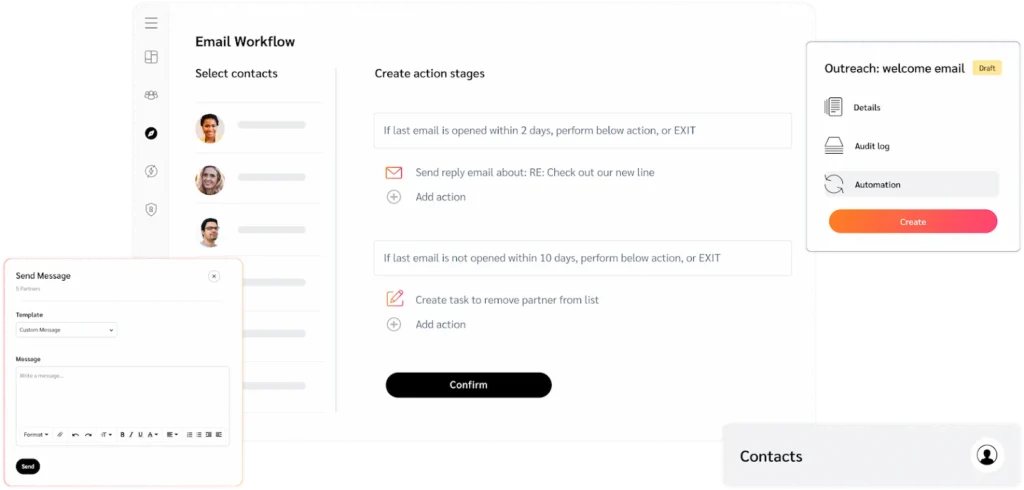
Protect and Monitor
Implementing a protection strategy secures your partnerships against threats and ensures ventures remain safe and productive. Monitoring provides detailed insights into partner performance, lead quality, and engagement levels. This data-driven vigilance allows your brand to make informed decisions that uphold the health of your partnership’s ecosystem.
Consider the following factors to strengthen your partnership program’s protection and monitoring to sustain growth and fortify confidence in your collaborations.
- Fraud monitoring. Keep a keen eye out for fraud—from unauthorized brand use to fake traffic generation. With real-time tracking and automatic alerts, you can spot and stop fraudulent activities in their tracks.
- Partner compliance and validation. Ensure your partners comply with the terms of your agreement. Regular checks and balances are key here. Consider using automated validation systems to streamline this process and keep everything above board.
- Program tracking and analytics. Use advanced analytics tools to track performance and spot any potential issues early. The more data you have, the better equipped you are to make informed decisions.

Optimize
Optimization involves leveraging and interpreting data to inform strategic actions. Brands should translate actionable insights into targeted strategies that improve the performance of every partnership. Let’s explore three ways brands can use data for maximum impact.
- Harness data for smarter decisions. Data-driven insights eliminate guesswork and empower your team to make informed decisions—assessing a potential partnership or analyzing current partner incrementality.
- Strategize with precision. Brands can use data as a roadmap to success by identifying partners and areas of your program that need a little boost.
- Personalize your partnerships. Insights into partner performance metrics help you tailor your approach to partners’ unique needs, fostering more productive relationships.
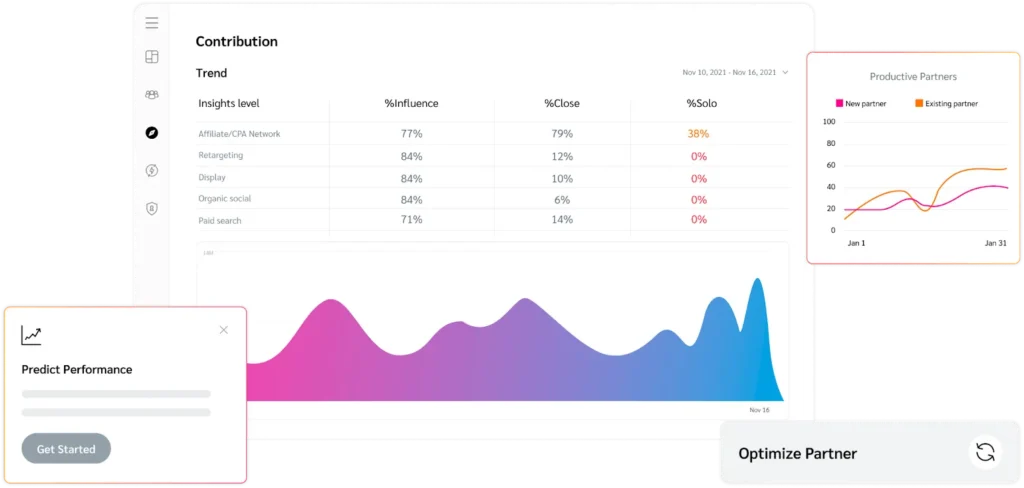
The perfect management solution: In-house, affiliate networks, or SaaS platforms
There’s no one way to run a partnership program, but they tend to fall into two categories: insourcing and outsourcing. Discover the three main partnership management approaches, each with its benefits and drawbacks.
In-house partnership programs
In-house partnership management delegates complete control of the program internally—from partner recruitment to tracking performance. The company is responsible for sourcing or developing solutions and tools to run and scale the program.
✅ Offers greater control and freedom to tailor the program to the business needs
✅ Forms stronger partner relationships through direct engagement
✅ Retains complete ownership of data generated by the program
❌ Requires considerable expertise, time, and resources
❌ Takes longer to set up and may involve integrating with other software and systems
❌ Involves manual partner recruitment, which can be an uphill task
Affiliate networks
Affiliate networks act as a middleman between brands and affiliate partners. The brand outsources partner management to seasoned experts and runs the program through the platform—from tracking results to rewarding partners.
✅ Optimizes partner recruitment with access to a pool of affiliate partners.
✅ Provides a quick, easy, and almost instantaneous set-up process.
✅ Saves time by automating partnership management tasks.
❌ Takes a percentage of affiliate’s sales, making it an expensive option.
❌ Limits partner interactions, which prevents the development of loyalty and trust.
❌ Restricts data visibility to gain a true understanding of program performance
SaaS partner management platforms
Management platforms are designed to streamline, scale, and optimize every stage of partner management. Innovative technology and software make growing your program easier by automating all the activities related to working with partners.
✅ Provides unparalleled data visibility to optimize performance
✅ Simplifies complex and manual processes so you can focus on business growth
✅ Offers a centralized location for all partnership management tasks
❌ Tends to be the more expensive option
❌ Some may lack data sovereignty, leaving you at their mercy to access metrics
❌ Some may lack intuitive onboarding for partners
The ideal solution should provide a one-stop shop for partner discovery, recruiting, communication, tracking, data, and everything else you need to manage any partnership. It would automate time-consuming manual tasks so you can invest that time into building stronger partnerships and planning better campaigns. The solution is out there. It may even be right under your nose.
FAQ
Partnership marketing involves collaborative relationships between brands or individuals to achieve mutual objectives. This approach offers several benefits for modern businesses:
-
- Increased revenue: Achieve growth without expanding your team or budget.
-
- Enhanced brand awareness: Reach new audiences, regions, and market segments.
-
- Improved customer retention: Build strong brand advocates and maintain loyal customers.
-
- Higher market share: Diversify partner types to capture a larger market portion.
-
- Better conversion rates: Leverage authentic relationships to boost sales.
Efficient management of partnership programs requires strategic approaches:
-
- Partner recruitment: Define your ideal partner, research potential candidates, and develop an attractive partnerships program.
-
- Contracting and payment: Use agile contracting systems and incentive-based payment models.
-
- Performance tracking: Measure key performance metrics and provide regular reports.
-
- Partner engagement: Maintain regular communication, collaborate on marketing initiatives, and offer support and resources.
-
- Protection and monitoring: Implement fraud monitoring, ensure compliance, and use advanced analytics tools.
-
- Optimization: Leverage data for informed decisions, strategize precisely, and personalize approaches based on partners’ needs.
There are three primary solutions for managing partnership programs: in-house management, affiliate networks, and SaaS platforms.
-
- In-house management offers greater control and customization but requires significant resources.
-
- Affiliate networks provide quick setup and access to a large pool of partners; however, they can be costly and may limit direct interactions.
-
- SaaS platforms, such as impact.com, streamline and automate management tasks, offering comprehensive data visibility and performance optimization. The choice depends on your specific needs, available resources, and desired level of control and customization.
Take advantage of partnerships to future-proof your business
The future of traditional marketing might seem uncertain, but partnerships can be a game-changer when it comes to connecting with customers. If you want to stay ahead of the competition, it’s crucial to understand how to develop successful partnership programs. Luckily, the impact.com platform provides all the tools you need to build, maintain, and optimize partnerships of all kinds.
Want to get started? Reach out at grow@impact.com to learn more or schedule a demo.





